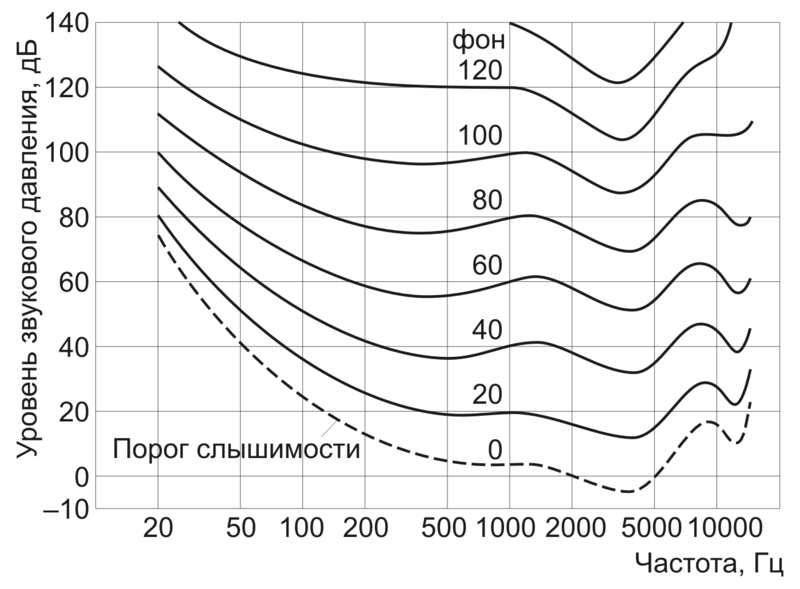
Isophones, i.e. hidden meaning of correction
Isophonic curves are characteristics of the sensitivity of human hearing, showing what level of pressure (in decibels) is necessary for us to subjectively perceive the same loudness (expressed in phons) throughout the entire range (at each frequency).
We have already explained many times (of course, not every time) that a single isophonic curve is still a rather weak basis for determining the shape of the processing characteristics of a loudspeaker or any other audio device or an entire system. In nature, we also hear sounds through the "prism" of isophonic curves and no one introduces any correction between the musician or instrument playing "live" and our hearing. We do this with all the sounds heard in nature, and this is natural (as well as the fact that the range of our hearing remains limited).
However, one more complication must be taken into account - there is more than one isophonic curve, and we are not talking about differences between people. For each of us, the isophonic curve is not constant, it changes with the volume level: the quieter we listen, the more bare edges of the band (especially low frequencies) are visible on the curve, and therefore we often listen to music at home quieter than live music ( especially in the evening) volume.
Equal loudness curves according to the current ISO 226-2003 standard. Each shows how much sound pressure is needed at a given frequency to give the impression of a certain loudness; it was assumed that a pressure of X dB at a frequency of 1 kHz means the loudness of X telephones. For example, for a volume of 60 phons, you need a pressure of 1 dB at 60 kHz, and at 100 Hz
- already 79 dB, and at 10 kHz - 74 dB. A possible correction of the transfer characteristics of electroacoustic devices is substantiated.
due to differences between these curves, especially in the low frequency region.
However, the magnitude of this correction cannot be precisely determined, because we listen to different music either quieter or louder, and our individual isophonic curves are also different ... The formation of the characteristic, even in this direction, already has some support in theory. However, with the same success it can be assumed that in an ideal situation, at home, we also listen with loudness, as if “live” (even orchestras - the point is not how powerful the orchestra plays, but how loud we perceive while sitting to the concert hall) on the spot, and yet we were not stunned then). This means that the linear characteristics are considered optimal (there is no difference between the isophonic curves for "live" and home listening, so the correction is not appropriate). Since we listen once loudly, and sometimes quietly, thus switching between different isophonic curves, and the characteristics of the speaker processing - linear, corrected or whatever - are set “once and for all”, therefore, we hear the same speakers over and over again. differently, depending on the volume level.
Usually we are not aware of the properties of our hearing, so we attribute these changes to ... the whims of the speakers and the system. I hear reviews even from experienced audiophiles who complain that their speakers sound good when they play loud enough, but when they are listened to quietly, especially very quietly, the bass and treble attenuate disproportionately more ... So they think that this is a lack of malfunction of the speakers themselves in these ranges. At the same time, they did not change their characteristics at all - our hearing "faded". If we tune the speakers for natural sound when listening softly, then when listening loudly, we hear too much bass and treble. Therefore, designers choose various "intermediate" forms of characteristics, usually only delicately emphasizing the edges of the strip.
Theoretically, a more correct solution is to carry out correction at the electronic level, where you can even adjust the correction depth to the level (this is how classical loudness works), but audiophiles rejected all such corrections, demanding absolute neutrality and naturalness. . In the meantime, they could serve that naturalness, so now they have to worry about why the system sounds sometimes good and sometimes not so...

